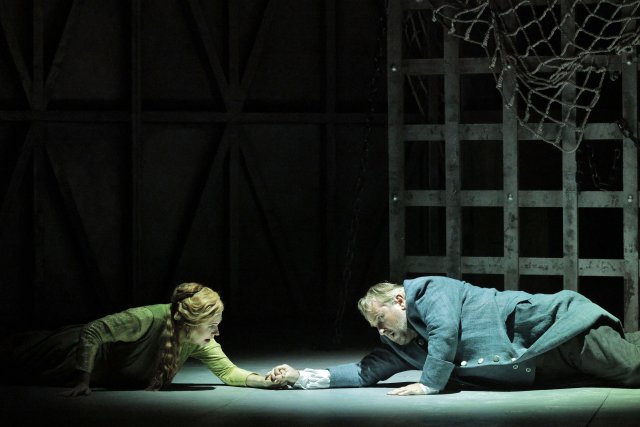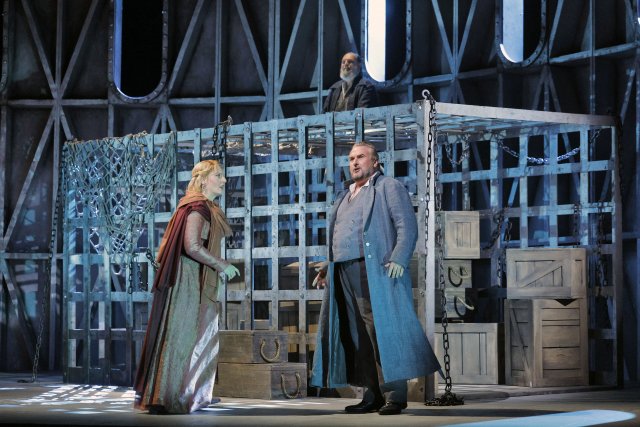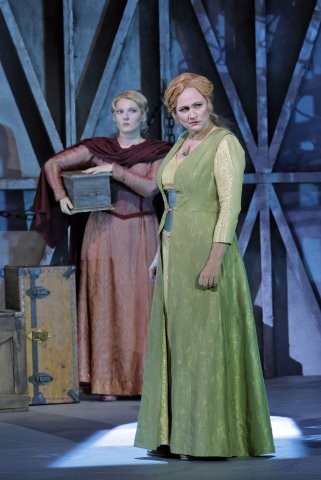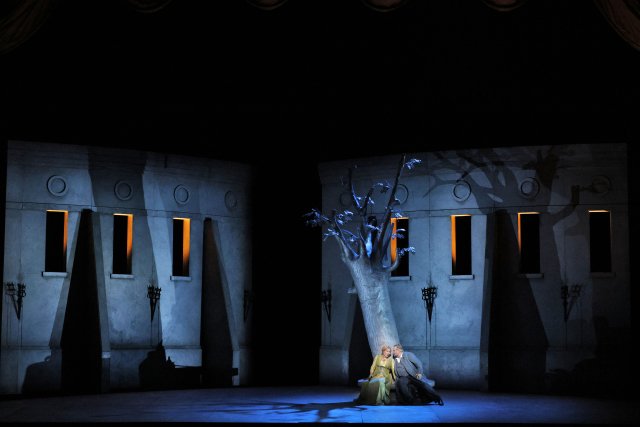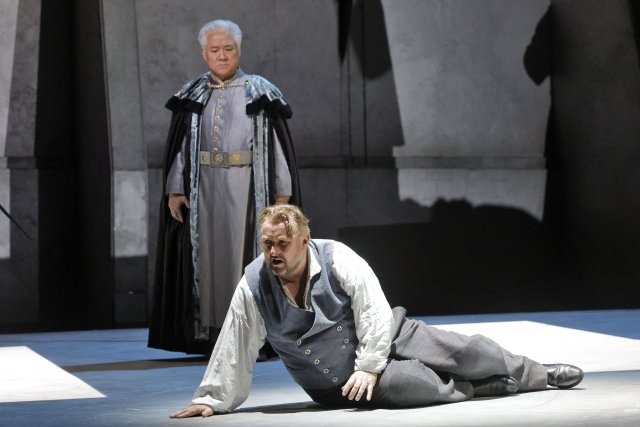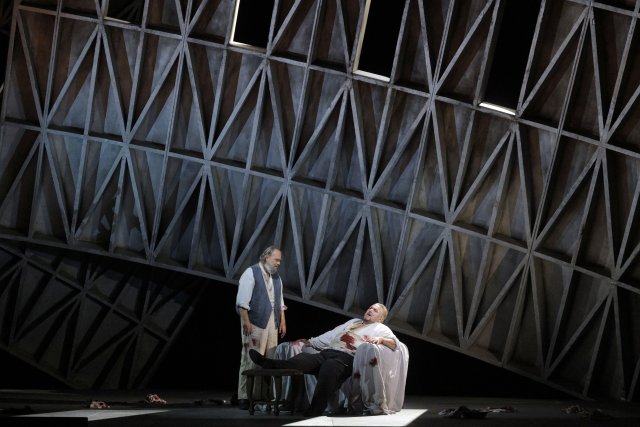Tristan & Isolde
San Francisco Opera's Fine Production of Wagner
By: Victor Cordell - Oct 25, 2024
The year is 1865, and Richard Wagner’s Tristan and Isolde receives its premiere six years after its completion. Initially controversial and later accepted as an innovative masterpiece, its initial chord in the prelude would change the trajectory of classical music.
What has become known as “the Tristan chord” conveys an edgy dissonance in several seconds of play that would open the door for atonalism which would later dominate the classical music landscape. But its significance is not the non-traditional structure of the chord as such. After numerous tantalizing teases throughout the tempestuous and tortured relationship between the title characters over the next four hours of music (almost five including intermissions), the tension from the dissonance is not relieved until the chord resolves in the title characters’ transcendence scene at the very end.
Tristan has had an odd history at San Francisco Opera. It was the first Wagner opera the company ever performed and received frequent productions in the 1930s and during World War II, even when Wagner’s music was revered by our enemies the Nazis as the Aryan ideal. Since then, the gaps between productions have lengthened, extending 18 years since the last offering. The current rendering is a passionate and powerful realization with fine singing and orchestral performance, well appreciated by an enthusiastic audience.
Influenced by his infatuation with the married Mathilde Wesendonck and the philosophy of Arthur Schopenhauer, Wagner became obsessed with love and death. Tristan’s forbidden love reflects that of the composer himself, while the opera represents the apotheosis of the merging and transcendence of those two conditions, with the belief that love continues beyond life. The supernatural nature of love also maps onto the world’s most famous love story, Shakespeare’s Romeo and Juliet.
The uncomplicated plot line of the opera draws from Celtic mythology presented in a style of romantic mystical realism. Tristan, who is designated successor to the throne of Cornwall, escorts a resistant Isolde to marry his uncle King Marke. To defeat the involuntary arrangement, Isolde instructs her maid, Brangäne, to poison a drink that she and Tristan will share. Instead, the maid mixes in a love potion, which triggers their illicit love affair and the retribution that would result in their deaths.
Perhaps the most lauded element in the opera is the heroic orchestral music for which Wagner was a master. Along with novel chord structures, the orchestra largely carries the melody in the score as well as its symbolism. Eun Sun Kim conducts the 72-piece orchestra through the musical marathon with great skill. The full orchestra resounds with rich tone and texture from the brass-driven fortissimos to the pianissimos like the beautiful English horn solo in Act 3.
Wagner also introduced orchestral leitmotifs in Tristan, which convey the symbolism. Most notably, the beautiful and haunting “Liebestod” (love-death) motif, which recurs in the opera, reaches its full realization as a closing aria in the climax, when Isolde elegizes the deceased Tristan.
Singing in Tristan demands unparalleled power and endurance. Two principals carry the load of a very long opera while competing with an orchestral volume that Wagner pitches to challenge singers’ limits.
Fortunately, this production casts leading Wagnerian heldentenor Simon O’Neill as Tristan, a role that he commands. Soprano Anja Kampe is a highly accomplished Isolde as well. From the time of their duet that dominates Act 2, both display their mellifluous and clarion voices. But through early Act 2, both sound underpowered, which one can assume is attributed to saving their voices for later dramatic moments.
Conversely, bass Kwangchul Youn as King Marke, came through as mellow, audible, and understandable throughout. Granted, however, his role demands less. Solid performances by Annika Schlicht as Isolde’s attendant Brangäne and Wolfgang Koch as Tristan’s attendant Kurwenal should also be noted.
Despite the outsized influence of Tristan and Isolde in subsequent opera, aspects other than the music don’t stand up as well to the normal scrutiny that operas undergo. For those expecting dynamic action, that is not this opera’s strong suit.
Wagner was extremely intellectual, philosophical, and poetic. As a result, Tristan is very reflective, talky, and static with little visual energy. Philosophical monologs and dialogs about ‘love and death’ and ‘day and night’ are sometimes repetitive and exhaustively long. Predominately, only two or three principals are on stage at a time, and their interaction is largely expository. The two brief periods that there are more than four artists on stage and any semblance of action, the extras are as unoccupied as statues. What’s more, the chorus’s brief performance is off-stage, so there is no visual sense of grand opera.
In keeping with modern perceptions of the austerity of the Middle Ages, San Francisco Opera’s staging is suitably spare and near monochromatic with dramatic shadowing. Sets in Act 1 are highly angular, representing the structural bones on the inside of a ship’s hull. The theme is repeated in Act 3, but with the set askew. Act 2 reveals plain building exteriors supported by simple early Gothic buttresses.
When all is said and done, Tristan and Isolde stands as a magnum opus in the idiom, and this production reaches admirable artistic heights. Serious opera aficionados and the intellectually curious will benefit from experiencing it.
Tristan and Isolde with music and lyrics by Richard Wagner is produced by San Francisco Opera and plays at War Memorial Opera House, 301 Van Ness Avenue, San Francisco, CA through November 5, 2024.

